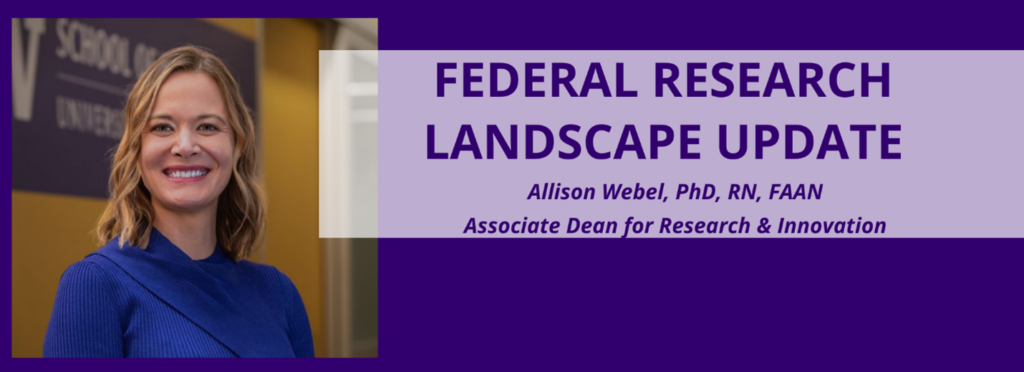
Happy New Year, Husky Scholars! We hope your 2026 is off to a great start. As you set goals for the year—whether personal or professional—remember that the Office for Nursing Research & Innovation is here to help you achieve your research ambitions. From planning and submitting grants to sharing your science on global stages and navigating post-award requirements, we’ve got you covered. Big (and manageable) changes are coming in 2026—new internal deadlines, updated NIH biosketch formats, WA-mandated diversity in clinical reporting, and research security training—so early planning is key. Whatever your resolutions, we are excited to be your partner in turning them into research success.
Grant Submissions in 2026: What You Need to Know
While submitting new research grant proposals is our most well-known service, institutional, state and federal changes necessitate early planning and outreach to our pre-award team. Big changes are here—new internal deadlines, updated NIH biosketch formats, diversity reporting, and research security training requirements mean early planning is essential. If you’re a PI, Co-Investigator, or Key Personnel on any proposal due after Jan 24, 2026, start your new biosketch now—it combines NSF and NIH formats and includes a certification against foreign talent recruitment. Clinical trials submitted after Jan 1, 2026 must meet UW’s Diversity in Clinical Trials reporting standards, and NIH now requires Research Security Training for senior/key personnel within 12 months of submission. The good news? Our same outstanding pre-award team is ready to help you navigate every step.
Sharing Your Science: We’ve Got You Covered
Presenting your research is just as important as conducting it—and we offer practical ways to help you share your work widely. Beyond guidance on abstracts and manuscripts, we provide travel funding for UW School of Nursing Seattle faculty members to support conference presentations- last year we awarded almost a dozen faculty members to attend scientific meetings around the globe. We also provide opportunities to showcase your findings at our monthly Lunch & Learn sessions, and a chance to reach the broader UW School of Nursing community through a featured column in our newsletter. These platforms amplify your impact, connect you with peers, and ensure your science reaches the audiences who need it most. Let us help you turn your research findings into healthcare influence. For questions about any of these ONR&I services, please contact us.
Post-Award Support: Keeping Your Project on Track
We know many of you are anticipating your first NOA in the coming year. That should, and will be celebrated by all of our team. However, securing extramural research funding is just the beginning—successful projects need strong follow-through to ensure that all promised project milestones are met. Our ONR&I post-award services go beyond technical support for budgets and project management. We provide a rigorous progress reporting process to ensure compliance with institutional, state, and federal regulations, maintain accountability for pre-determined milestones, and offer tailored assistance for early-stage investigators or new investigators. Whether it’s navigating reporting requirements or troubleshooting challenges, we’re here to make sure your research stays on track and meets every obligation. With our team’s guidance, you can focus on the science while we handle the details that keep your project moving forward.
As we step into 2026, remember that resolutions aren’t just for personal goals—they can transform your research journey too. Whether you’re planning your first grant submission, preparing to share your findings on a global stage, or navigating the complexities of post-award compliance, you’re not alone. The Office for Nursing Research & Innovation remains your committed and enthusiastic partner, ready to guide, troubleshoot, and celebrate every milestone with you. So, as you set your sights on new research achievements this year, know that we’re here to make those ambitions possible—because when our Husky Scholars thrive, so does the future of nursing research.
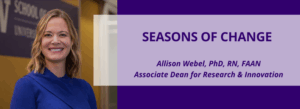
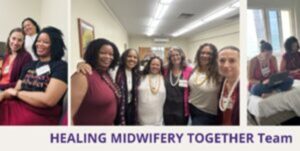 of the UW School of Nursing’s scientific mission. This year, as the importance of that work faced scrutiny, our community didn’t waver—we doubled down. We reaffirmed our commitment to advancing the health of all women through rigorous science, because we know this truth: when we invest in women’s health, everyone benefits. Dive into our #3 most-read story, part one of a powerful two-part series,
of the UW School of Nursing’s scientific mission. This year, as the importance of that work faced scrutiny, our community didn’t waver—we doubled down. We reaffirmed our commitment to advancing the health of all women through rigorous science, because we know this truth: when we invest in women’s health, everyone benefits. Dive into our #3 most-read story, part one of a powerful two-part series,  as NIH’s unexpected policy shift: a new cap on grant submissions. While the idea had circulated for years, the official announcement came as a surprise to many: starting January 2026, investigators can submit no more than six new, renewal, resubmission, or revision applications per calendar year. This change isn’t just procedural, it’s strategic. Researchers will need to rethink how and when they submit proposals, ensuring every application carries a clear purpose and impact. Adding to the buzz, NIH also signaled heightened scrutiny of artificial intelligence (AI) in grant writing, warning that AI-generated applications may be deemed non-compliant. Our community sees this as more than a limitation, it’s an opportunity to elevate the quality and value of every submission. Explore our most-read article of 2025 to learn what this means for investigators:
as NIH’s unexpected policy shift: a new cap on grant submissions. While the idea had circulated for years, the official announcement came as a surprise to many: starting January 2026, investigators can submit no more than six new, renewal, resubmission, or revision applications per calendar year. This change isn’t just procedural, it’s strategic. Researchers will need to rethink how and when they submit proposals, ensuring every application carries a clear purpose and impact. Adding to the buzz, NIH also signaled heightened scrutiny of artificial intelligence (AI) in grant writing, warning that AI-generated applications may be deemed non-compliant. Our community sees this as more than a limitation, it’s an opportunity to elevate the quality and value of every submission. Explore our most-read article of 2025 to learn what this means for investigators: 
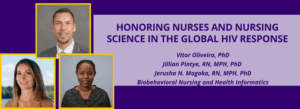


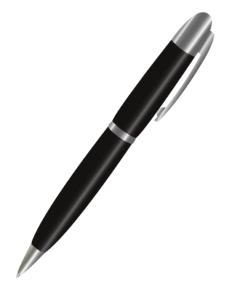 has been to many. While understandable, this paralysis is not insurmountable. There is always a degree of uncertainty with research funding, however it’s also important to lean into the other, less prominent side of research – disseminating our results.
has been to many. While understandable, this paralysis is not insurmountable. There is always a degree of uncertainty with research funding, however it’s also important to lean into the other, less prominent side of research – disseminating our results. writing alongside trusted colleagues makes the process more productive and enjoyable. If you have not experienced this yet, consider forming a writing group, building cross-disciplinary partnerships, organizing a writing retreat, or setting up regular writing accountability calls. Invite constructive feedback, share your drafts early, and be open to critique. Scholarship and scientific progress thrive in community—and writing with friends is one of the best ways to keep momentum strong.
writing alongside trusted colleagues makes the process more productive and enjoyable. If you have not experienced this yet, consider forming a writing group, building cross-disciplinary partnerships, organizing a writing retreat, or setting up regular writing accountability calls. Invite constructive feedback, share your drafts early, and be open to critique. Scholarship and scientific progress thrive in community—and writing with friends is one of the best ways to keep momentum strong.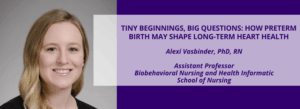


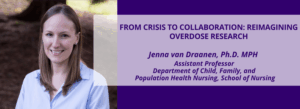
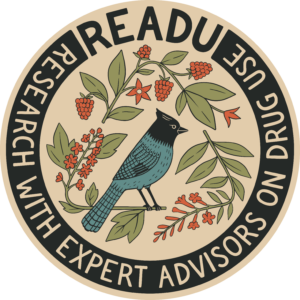

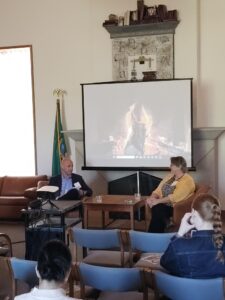
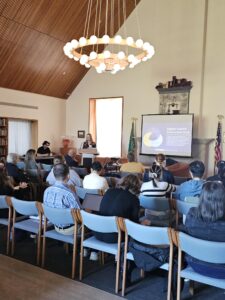

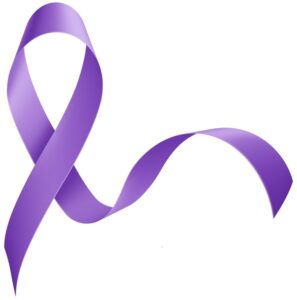 At the University of Washington, we have been studying how laws and policies—including those in schools, workplaces, and legal systems—can go beyond short-term fixes and make a real difference. For example,
At the University of Washington, we have been studying how laws and policies—including those in schools, workplaces, and legal systems—can go beyond short-term fixes and make a real difference. For example, 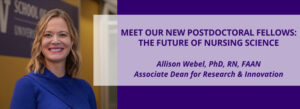
 Bethany Armentrout, PhD
Bethany Armentrout, PhD Nanyombi Lubimbi, PhD
Nanyombi Lubimbi, PhD



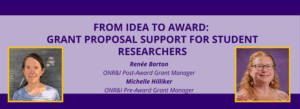
 But the most important part of any grant application is knowing your why. Why apply for this grant and how does your why align with the sponsor’s priorities. Certainly, applying for a research grant as a student offers benefits that extend far beyond financial support of a research project. Some research grants (e.g., NIH F31 applications, AHA Predoctoral Fellowships) can help cover essential costs such as tuition, stipends, supplies, and travel for conferences. In addition, funded research projects often lead to opportunities for publication and presentation, allowing students to raise their professional visibility through published manuscripts, posters, and conference talks. These experiences not only build academic credibility but also connect students with faculty mentors and research teams, helping to foster valuable professional collaborations.
But the most important part of any grant application is knowing your why. Why apply for this grant and how does your why align with the sponsor’s priorities. Certainly, applying for a research grant as a student offers benefits that extend far beyond financial support of a research project. Some research grants (e.g., NIH F31 applications, AHA Predoctoral Fellowships) can help cover essential costs such as tuition, stipends, supplies, and travel for conferences. In addition, funded research projects often lead to opportunities for publication and presentation, allowing students to raise their professional visibility through published manuscripts, posters, and conference talks. These experiences not only build academic credibility but also connect students with faculty mentors and research teams, helping to foster valuable professional collaborations. Now that you’ve identified your first research grant, work with the ONR&I pre-award services for comprehensive support throughout the proposal development, budgeting, and compliance process. We coordinate with institutional offices, especially the Office of Sponsored Programs (OSP), to ensure that your submission is properly authorized and timely. For a successful proposal, students should start early, ask questions, and tailor their applications to the funder’s mission. Clarity, conciseness, and storytelling are key to making a compelling case. And most importantly, students should lean on the
Now that you’ve identified your first research grant, work with the ONR&I pre-award services for comprehensive support throughout the proposal development, budgeting, and compliance process. We coordinate with institutional offices, especially the Office of Sponsored Programs (OSP), to ensure that your submission is properly authorized and timely. For a successful proposal, students should start early, ask questions, and tailor their applications to the funder’s mission. Clarity, conciseness, and storytelling are key to making a compelling case. And most importantly, students should lean on the 

 There are few phrases more familiar- or feared -by those of us in higher education than publish or perish. Our professional success is often built on a sustained track record of high-impact, peer-reviewed, published scholarship (in addition to excellent teaching of course). And as nurse scientists, our scholarship is rooted in service—to our patients, our communities, and our broader mission to improve the health of all. That’s why the NIH’s updated Public Access Policy,
There are few phrases more familiar- or feared -by those of us in higher education than publish or perish. Our professional success is often built on a sustained track record of high-impact, peer-reviewed, published scholarship (in addition to excellent teaching of course). And as nurse scientists, our scholarship is rooted in service—to our patients, our communities, and our broader mission to improve the health of all. That’s why the NIH’s updated Public Access Policy,  What’s an AAM?
What’s an AAM? Why This Matters for Nursing
Why This Matters for Nursing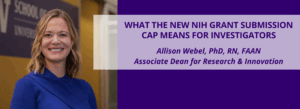


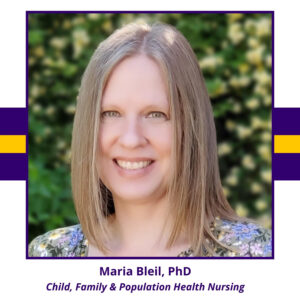
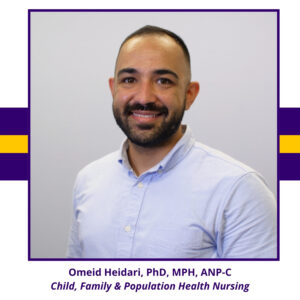
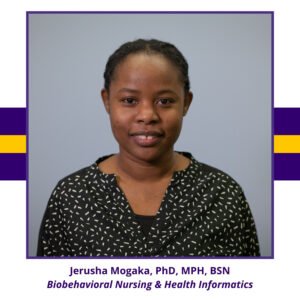


 Summer is an ideal time to hone your research skills or explore new methodologies. We post internal and external training opportunities in our
Summer is an ideal time to hone your research skills or explore new methodologies. We post internal and external training opportunities in our  Stay on top of your research grant spending with ease by getting familiar with the
Stay on top of your research grant spending with ease by getting familiar with the  Many major grant deadlines fall in the early fall (e.g., NIH, RRF, RIFP). Use the summer to map out your submission calendar, gather materials, and begin drafting. Early planning reduces last-minute stress and improves the quality of your proposals. Remember to submit your planned proposals to the
Many major grant deadlines fall in the early fall (e.g., NIH, RRF, RIFP). Use the summer to map out your submission calendar, gather materials, and begin drafting. Early planning reduces last-minute stress and improves the quality of your proposals. Remember to submit your planned proposals to the  Global collaboration can open new avenues for funding and innovation. As the federal government updates their policies on funding global collaboration, use the summer to identify potential international partners, understand relevant regulations, and explore funding mechanisms that support cross-border research.
Global collaboration can open new avenues for funding and innovation. As the federal government updates their policies on funding global collaboration, use the summer to identify potential international partners, understand relevant regulations, and explore funding mechanisms that support cross-border research. Finally, make time to read beyond your area of scholarly expertise. Reading broadly can inspire new ideas, uncover emerging trends, and spur interdisciplinary connections. Whether it’s journal articles, white papers, lay articles, books, or poetry, reading is a powerful way to nourish your intellectual curiosity.
Finally, make time to read beyond your area of scholarly expertise. Reading broadly can inspire new ideas, uncover emerging trends, and spur interdisciplinary connections. Whether it’s journal articles, white papers, lay articles, books, or poetry, reading is a powerful way to nourish your intellectual curiosity.
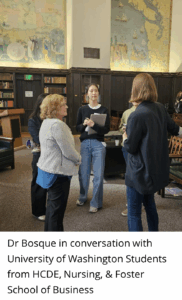 The heart of the event was an intimate and inspiring conversation between Dr. Oleg Zaslavsky, Director of the Digital Health Innovation Hub and Aljoya Endowed Professor in Aging, and Dr. Elena Bosque, a seasoned neonatal nurse practitioner at Seattle Children’s Hospital and award-winning inventor. Their conversation offered a rare glimpse into the personal and professional journey of a nurse innovator.
The heart of the event was an intimate and inspiring conversation between Dr. Oleg Zaslavsky, Director of the Digital Health Innovation Hub and Aljoya Endowed Professor in Aging, and Dr. Elena Bosque, a seasoned neonatal nurse practitioner at Seattle Children’s Hospital and award-winning inventor. Their conversation offered a rare glimpse into the personal and professional journey of a nurse innovator.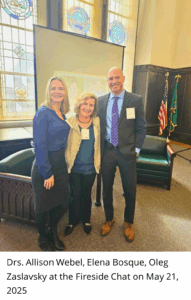 innovators and entrepreneurs. Rather than providing a list of tips or strategies, she shared a story—simple, personal, and revealing. She recalled a moment from her undergraduate years, during the high-stress final exam period. Her roommate, seemingly unfazed, was curled up with a novel—reading for pleasure. Dr. Bosque, focused on the academic grind, challenged her: “But we don’t do that,” she said, echoing the established norm that finals week was for studying, not reading for pleasure. Her roommate looked up and replied, gently but firmly, “Of course we do.”
innovators and entrepreneurs. Rather than providing a list of tips or strategies, she shared a story—simple, personal, and revealing. She recalled a moment from her undergraduate years, during the high-stress final exam period. Her roommate, seemingly unfazed, was curled up with a novel—reading for pleasure. Dr. Bosque, focused on the academic grind, challenged her: “But we don’t do that,” she said, echoing the established norm that finals week was for studying, not reading for pleasure. Her roommate looked up and replied, gently but firmly, “Of course we do.”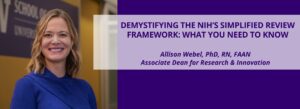

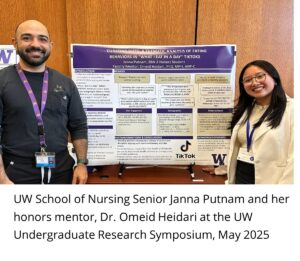
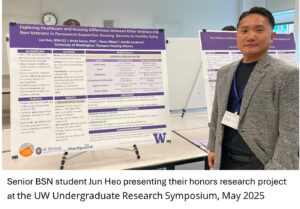
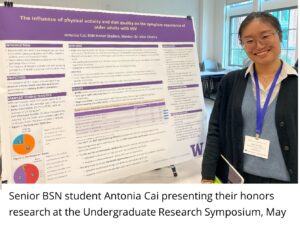 One of the most significant challenges Antonia faced was navigating complex statistical methods with limited prior experience in quantitative research. Learning to interpret regression analyses and control for covariates like age and sex initially felt daunting. However, with Dr. Oliveira’s mentorship—including a tailored data analysis workshop and hands-on practice with statistical software—Antonia steadily built her confidence and competence.
One of the most significant challenges Antonia faced was navigating complex statistical methods with limited prior experience in quantitative research. Learning to interpret regression analyses and control for covariates like age and sex initially felt daunting. However, with Dr. Oliveira’s mentorship—including a tailored data analysis workshop and hands-on practice with statistical software—Antonia steadily built her confidence and competence.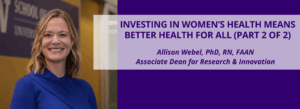



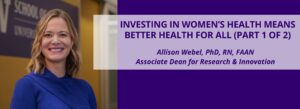
 Generously funded by the Skyline Foundation, which provides $200,000 per year for three years, the project underscores the importance of the UW School of Nursing’s dedication to supporting midwives and will ultimately translate to better women’s and family care. Looking ahead, this project will co-create an implementation plan for an educational program that supports all midwifery professions, sharing knowledge and healing wounds to better support patients and families. This work is about more than just education; it’s about creating a sustainable profession that will make a profound impact on women’s health and overall well-being.
Generously funded by the Skyline Foundation, which provides $200,000 per year for three years, the project underscores the importance of the UW School of Nursing’s dedication to supporting midwives and will ultimately translate to better women’s and family care. Looking ahead, this project will co-create an implementation plan for an educational program that supports all midwifery professions, sharing knowledge and healing wounds to better support patients and families. This work is about more than just education; it’s about creating a sustainable profession that will make a profound impact on women’s health and overall well-being. Supported by more than $14M in grants from NIH and the Gates Foundation, Jillian’s research is backed by distinguished sponsors. This funding not only advances HIV and STI prevention and treatment but also trains the next generation of bold, innovative women’s health scientists. Despite current challenges, Dr. Pintye is optimistic. Advances in HIV science bring the possibility of ending the HIV epidemic within our reach. She hopes her research will inform health policies and clinical practices, creating an HIV-free generation.
Supported by more than $14M in grants from NIH and the Gates Foundation, Jillian’s research is backed by distinguished sponsors. This funding not only advances HIV and STI prevention and treatment but also trains the next generation of bold, innovative women’s health scientists. Despite current challenges, Dr. Pintye is optimistic. Advances in HIV science bring the possibility of ending the HIV epidemic within our reach. She hopes her research will inform health policies and clinical practices, creating an HIV-free generation. local entities over the past decade.
local entities over the past decade.
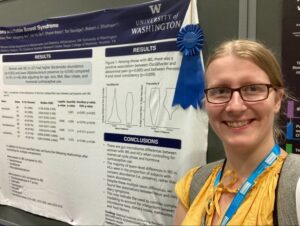
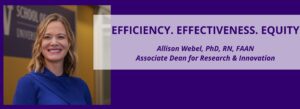




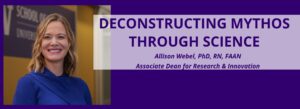
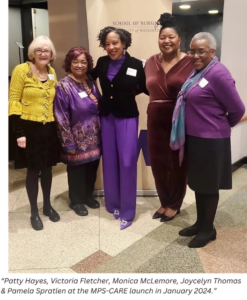 Last week, the University of Washington said goodbye to Dr. McLemore as she departed to undertake a new leadership role at the NYU Rory Myers College of Nursing. Her leadership will be missed. However, the work of dismantling mythology in nursing extends far beyond the work of one individual or one center. It is the work of all of us, and science offers tools to allow us to accomplish this work. Audre Lorde said, “…and that visibility which makes us most vulnerable is that which also is the source of our greatest strength.”
Last week, the University of Washington said goodbye to Dr. McLemore as she departed to undertake a new leadership role at the NYU Rory Myers College of Nursing. Her leadership will be missed. However, the work of dismantling mythology in nursing extends far beyond the work of one individual or one center. It is the work of all of us, and science offers tools to allow us to accomplish this work. Audre Lorde said, “…and that visibility which makes us most vulnerable is that which also is the source of our greatest strength.”